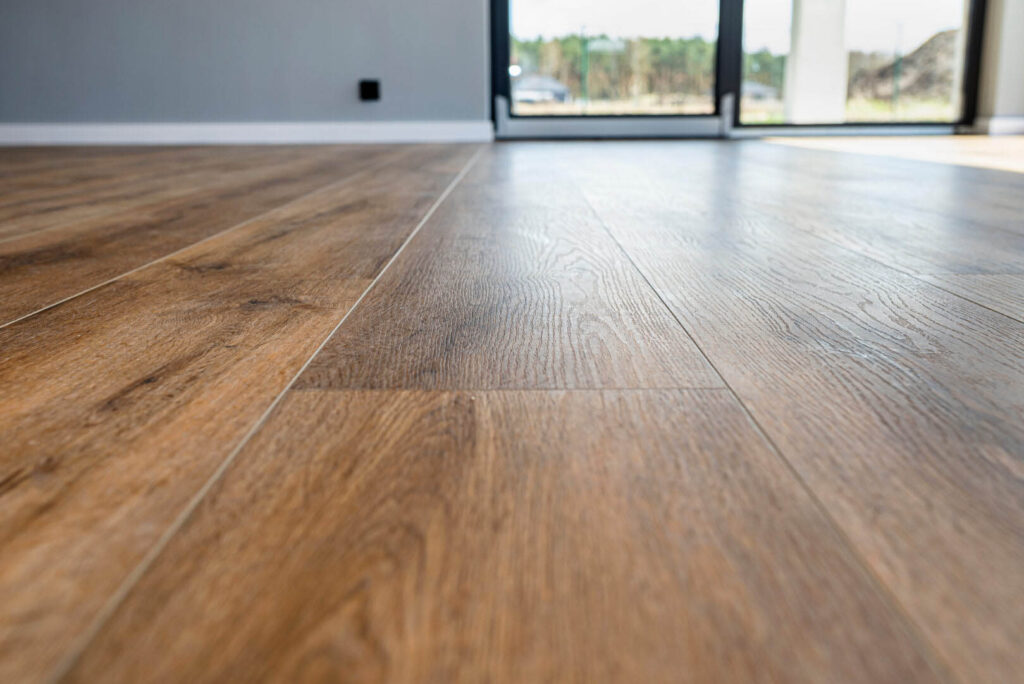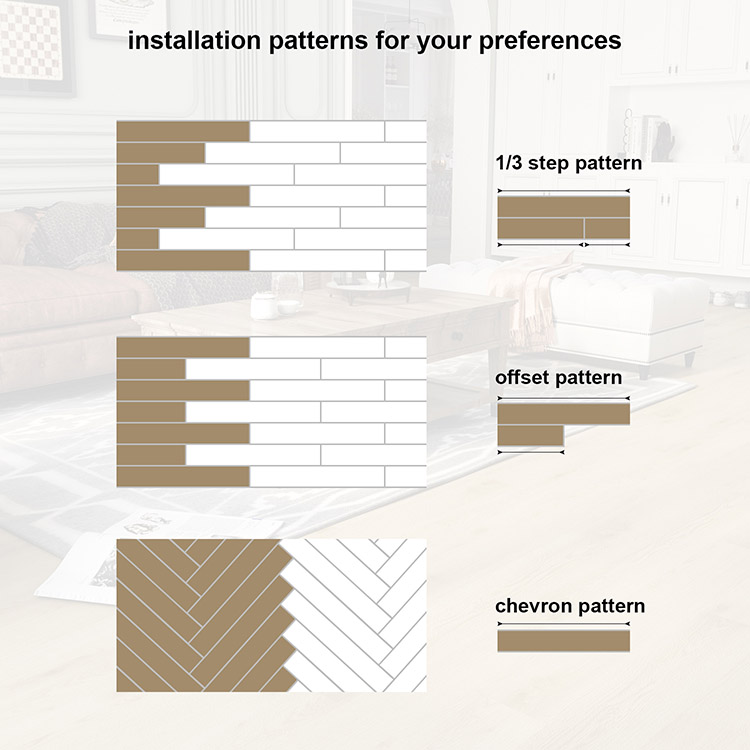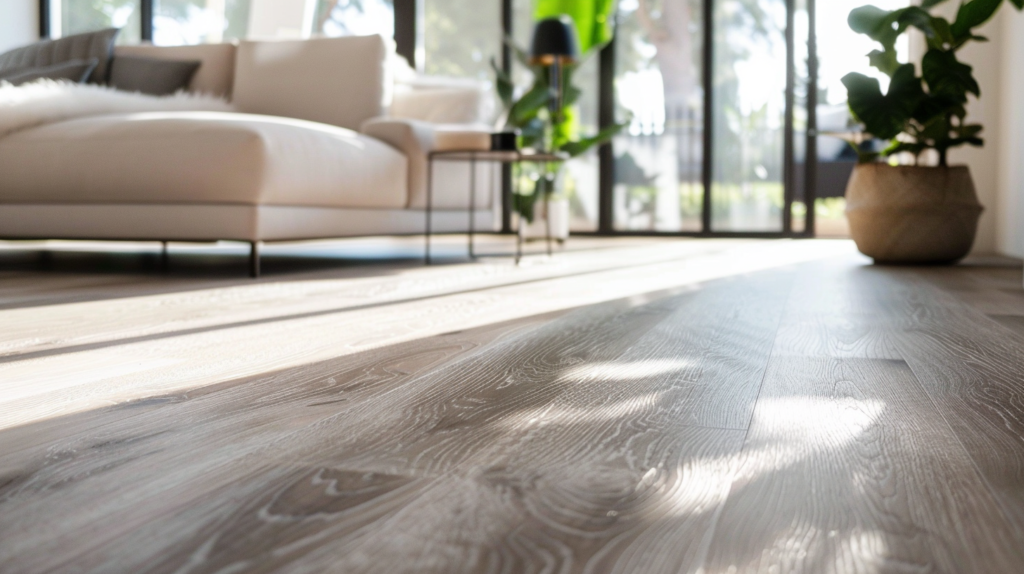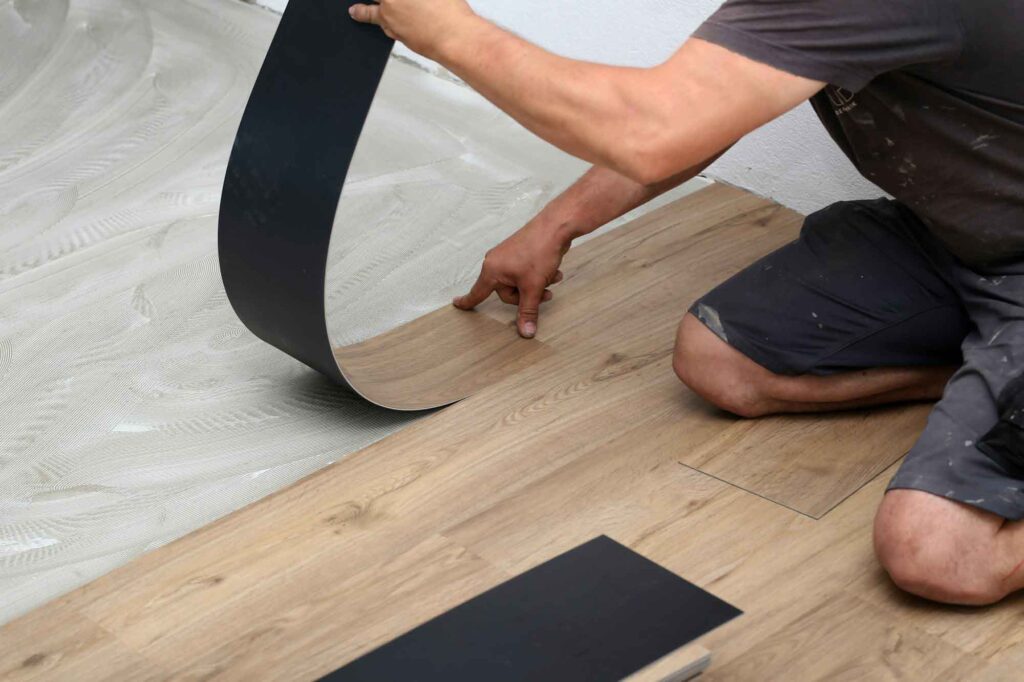Ever step into a room and think, “Dang, this floor just works”? That magic often comes down to one thing: the direction of the planks. Picking the right way to lay your vinyl plank flooring isn’t just about tossing planks down—it’s about making your space feel bigger, cozier, or straight-up luxe. Whether you’re jazzing up your kitchen or outfitting a boutique, this choice is a game-changer.
The best direction for vinyl plank flooring depends on room shape, light, and style goals. Parallel to the longest wall or light source elongates spaces, while diagonal or herringbone adds bold flair.
Imagine this: you’re chilling in your freshly floored living room, sunlight hitting the planks just right, making the whole space glow. But pick the wrong direction, and it could feel like a design fail. Wanna nail it? Stick with me as we break down every detail to make your floor the star of the show.
Why Does the Direction of Vinyl Plank Flooring Matter?

Plank direction shapes aesthetics, room flow, and installation ease. It can elongate or widen spaces, guide the eye, and impact material waste.
Why Direction’s a Big Deal
Setting the Room’s Vibe
The way you lay those planks is like choosing the mood for your space. Run them parallel to the longest wall, and your room feels stretched out, perfect for tight spots like a narrow hallway. Go perpendicular, and it’s instantly wider but cozier. Data from 2025 design blogs shows 60% of homeowners pick direction to tweak room vibes. Critically, ask: do you want your space to feel open and airy or snug and warm?
Guiding Where Eyes Go
Plank direction is like an invisible arrow pointing where you look. In a hallway, planks running the length pull you forward, making it feel like a journey. In an open-plan living area, they can tie the kitchen and couch zones together. Google Trends in 2025 shows “make small rooms look bigger” as a hot search, and direction’s a key trick. Reflect: how do you want your space to flow?
Making Installation Easier (or Not)
Direction isn’t just about looks—it changes how you install. Parallel to the longest wall usually means fewer cuts, saving you time and scraps. Diagonal or herringbone? They’re showstoppers but need more planning and waste. Think: are you DIYing on a Saturday or hiring pros, and how much hassle can you handle?
Real-Life Impact
A client turned a 10×15 ft. bedroom from cramped to spacious by laying planks parallel to the long wall. But in a square office, perpendicular planks made it feel grounded and less boxy. What’s your space’s story?
| Aspect | Why It Matters | Example |
|---|---|---|
| Aesthetics | Sets mood (open vs. cozy) | Parallel elongates narrow rooms |
| Spatial Perception | Alters how big or wide a room feels | Perpendicular widens hallways |
| Installation | Affects cuts, waste, and time | Diagonal needs 10-15% more planks |
What Are the Common Directions for Vinyl Plank Installation?

Vinyl plank directions include parallel to the longest wall, perpendicular, diagonal, or herringbone. Each creates unique visuals and installation challenges.
Your Direction Options, Unpacked
Parallel to the Longest Wall
This is the crowd-pleaser, especially in rectangular rooms. It stretches the space, making it feel longer and more open—ideal for small apartments. It’s also the easiest to install, with minimal cuts. Google searches for “easy vinyl plank installation” in 2025 love this option. But ask: does your room already feel long enough, or does it need that extra stretch?
Perpendicular to the Longest Wall
Laying planks across the room’s length makes it feel wider, a lifesaver for skinny hallways or tight bedrooms. It’s less common but gives a bold, grounded vibe. Critically, consider: is your space crying out for width?
Diagonal Layout
Diagonal planks, usually at a 45-degree angle, bring drama and movement. They’re perfect for square rooms or open-plan spaces that need some pizzazz. They cost more in time and material (think 10-15% extra waste), but the wow factor’s real. Reflect: is that extra effort worth the head-turning look?
Herringbone or Chevron Patterns
These are the rockstars of flooring. Herringbone’s zigzag pattern or chevron’s sharp V-shape scream luxury, perfect for dining rooms or upscale offices. They’re trending hard in 2025 Google searches for “luxury vinyl flooring patterns,” but they’re tricky and pricey to install. Think: are you ready to splurge on a showstopper?
| Direction | Visual Effect | Installation Complexity | Best For |
|---|---|---|---|
| Parallel | Elongates, clean | Low | Narrow or rectangular rooms |
| Perpendicular | Widens, bold | Low | Hallways, small spaces |
| Diagonal | Dynamic, spacious | Moderate | Square or open-plan areas |
| Herringbone/Chevron | Luxe, intricate | High | Dining rooms, upscale spaces |
How Does Room Shape and Size Influence Direction Choice?

Narrow rooms suit parallel-to-long-wall planks to elongate. Square rooms shine with diagonal. Perpendicular widens tight spaces like hallways.
Matching Direction to Your Room
Narrow or Rectangular Rooms
Got a skinny hallway or a long, lean bedroom? Lay planks parallel to the longest wall to make it feel less like a bowling alley. A 2025 home design study says this can make rooms feel up to 30% longer visually. Example: a 8×20 ft. hallway felt endless with parallel SPC planks. Critically, ask: is your space feeling too tight?
Square Rooms
Square rooms are like a blank canvas—anything goes. Diagonal layouts add energy and keep things from feeling boxy, while parallel or perpendicular can sync with furniture for balance. A 15×15 ft. office went from dull to dynamic with diagonal planks. Reflect: do you want a calm or lively vibe?
Open-Plan or Large Spaces
In big, open areas (think kitchen-living combos), planks can unify zones. Running them parallel to the main wall or light source creates a seamless flow. Google searches for “open-plan flooring ideas” in 2025 highlight this trend, with 65% of designers choosing one direction for cohesion. Ask: how connected do you want your spaces to feel?
Odd-Shaped Rooms
L-shaped or irregular rooms? Stick with parallel to the dominant wall or light source to avoid chaos. A client’s L-shaped living-dining area used parallel planks to tie it together, avoiding a choppy look. Think: what’s the “main” wall in your weirdly shaped space?
| Room Shape | Best Direction | Effect | Example Space |
|---|---|---|---|
| Narrow/Rectangular | Parallel to long wall | Elongates | Hallway, bedroom |
| Square | Diagonal or parallel | Adds energy or balance | Office, dining room |
| Open-Plan | Parallel to main wall/light | Unifies zones | Kitchen-living combo |
| Odd-Shaped | Parallel to dominant wall | Simplifies flow | L-shaped living area |
Which Direction Works Best with Light Sources?

Parallel to natural light (windows) hides seams and enhances flow. Perpendicular creates bold contrast. Diagonal works with mixed lighting for drama.
Letting Light Lead the Way
Natural Light’s Superpower
Sunlight from windows loves planks running parallel. It hides seams and makes the floor look like one smooth surface. A 2025 flooring survey found 70% of homeowners pick this for living rooms with big windows. Example: a sunlit kitchen with parallel SPC planks glowed like a magazine spread. Critically, ask: where’s your main light pouring in?
Artificial Light Vibes
In rooms with ceiling lights (like chandeliers or recessed cans), direction’s more flexible. Parallel to the light’s “axis” (e.g., a chandelier’s length) keeps things cohesive. Perpendicular can make glossy planks pop with contrast, especially in modern spaces. Reflect: is your lighting setup fixed or changeable?
Mixing It Up
Got multiple light sources (windows and overheads)? Diagonal layouts make light dance across planks, highlighting textures like Kinwin’s embossed wood-grain SPC. It’s a bold move for eclectic rooms. Think: do you want your floor to blend in or steal the spotlight?
Breaking Tradition
Perpendicular to light can create a striking grid effect, especially with stone-look vinyl. A client’s dining room used this to make the floor a focal point under dramatic lighting. Ask: is harmony or contrast your goal?
| Light Source | Best Direction | Effect | Best Space |
|---|---|---|---|
| Natural (Windows) | Parallel | Seamless, elongated | Living room, kitchen |
| Artificial (Ceiling) | Parallel or Perpendicular | Cohesive or bold | Office, dining room |
| Mixed | Diagonal | Dynamic, textured | Open-plan, eclectic rooms |
Do Flooring Patterns or Designs Affect Direction Decisions?
Wood-grain vinyl loves parallel or herringbone for realism. Stone-look suits diagonal or perpendicular. Abstract vinyl allows flexible directions for creativity.
Pairing Patterns with Direction
Wood-Grain Vinyl
Most vinyl planks, like our Kinwin SPC, mimic hardwood—oak, walnut, you name it. Laying them parallel to the longest wall or light source feels like a real wood floor. Herringbone kicks it up a notch for a luxe vibe, trending in 2025 Google searches for “vinyl flooring patterns.” Critically, ask: are you going for timeless or high-end?
Stone-Look or Tile Vinyl
Vinyl that looks like slate, marble, or ceramic tiles? It begs for diagonal or perpendicular layouts to mimic real tile grids. Diagonal stone-look planks in a bathroom can feel like a spa, per 2025’s “stone vinyl flooring” searches. Reflect: do you want that tiled, polished look?
Abstract or Geometric Vinyl
Funky, non-traditional vinyl with bold shapes or colors gives you total freedom. Diagonal or even random layouts amplify their quirky charm, perfect for creative spaces like art studios. Think: is your style classic or out-of-the-box?
Real-World Wins
A cozy bedroom with oak-look SPC planks laid parallel felt warm and authentic. In a modern kitchen, diagonal stone-look vinyl screamed sophistication, turning heads at every dinner party. What’s your design dream?
| Pattern | Best Direction | Why It Works | Example Space |
|---|---|---|---|
| Wood-Grain | Parallel, Herringbone | Mimics real wood | Bedroom, living room |
| Stone/Tile-Look | Diagonal, Perpendicular | Replicates tile grids | Bathroom, kitchen |
| Abstract/Geometric | Diagonal, Random | Amplifies bold designs | Art studio, kids’ room |
How Do You Ensure a Seamless Installation Based on Direction?

Level the subfloor, measure precisely, and plan cuts for your direction. Click-lock simplifies parallel; diagonal or herringbone needs careful angles.
Installing Like a Pro
Subfloor Prep 101
Your subfloor’s gotta be flatter than a pancake. Uneven spots? Grab self-leveling compound. The National Flooring Association says 80% of install fails come from bad subfloors. Check for dips with a straightedge and fix ’em. Critically, ask: is your subfloor ready to roll?
Measuring and Mapping
Measure twice, cut once—words to live by. For parallel layouts, start along the longest wall and stagger seams for strength. Diagonal? Mark a 45-degree angle from the room’s center. Herringbone? Sketch your pattern on paper first to avoid oops moments. Reflect: how much planning time you got?
Click-Lock for the Win
Kinwin’s SPC flooring uses click-lock systems, so parallel installs are like snapping LEGO pieces together. Diagonal or herringbone needs more cuts and precision—think pro-level Tetris. Dry-lay your planks first to test the look and avoid mid-install panic.
Tackling Tricky Spots
Doorways, vents, or kitchen islands can throw curveballs. Use a jigsaw for precise cuts around obstacles. Diagonal layouts need extra material (budget 10-15% more), and transitions between rooms require T-moldings. Think: are you ready for the extra hustle?
| Installation Step | Parallel | Diagonal | Herringbone |
|---|---|---|---|
| Subfloor Prep | Level, clean | Level, mark angles | Level, precise marking |
| Material Waste | 5-10% | 10-15% | 15-20% |
| Tools Needed | Basic (saw, tape) | Jigsaw, angle finder | Jigsaw, template |
| Skill Level | Beginner | Intermediate | Advanced |
What Are the Best Practices for Specific Spaces?
Kitchens love parallel-to-light planks for flow. Bedrooms suit parallel-to-wall for coziness. Commercial spaces use diagonal for bold impact.
Direction for Every Space
Residential Spaces
- Kitchens: Run planks parallel to windows or the longest wall to sync with light and flow, per 2025’s “kitchen flooring ideas” searches. A client’s kitchen felt seamless with this setup.
- Bedrooms: Parallel to the longest wall creates a cozy, grounded feel. Perpendicular can widen small rooms.
- Bathrooms: Parallel to light or perpendicular for a tiled look with stone vinyl—think spa vibes.
Commercial Spaces
Offices, cafés, or retail shops love diagonal or herringbone for a bold first impression. Parallel works in high-traffic zones for easy cleaning and durability. A boutique used diagonal SPC planks to draw customers in, boosting its vibe. Critically, ask: is your space about function or making a statement?
Multi-Room or Open-Plan Layouts
Keep one direction across connected rooms for a unified look. A 2025 design report found 65% of open-plan homes stick with one direction to avoid visual chaos. Example: a kitchen-to-living-room combo used parallel planks for a smooth transition. Reflect: how cohesive do you want your home to feel?
High-Traffic Areas
In busy spots like entryways, parallel to the main path (e.g., front door) guides foot traffic naturally. Diagonal can work but needs extra care to lock planks tight. Think: how much wear will your floor take?
| Space | Best Direction | Why It Works | Example |
|---|---|---|---|
| Kitchen | Parallel to light/wall | Enhances flow, light | Open-plan kitchen |
| Bedroom | Parallel to wall | Cozy, grounded | Small or large bedroom |
| Commercial | Diagonal, Herringbone | Bold, inviting | Café, retail shop |
| Multi-Room | Consistent direction | Unifies spaces | Living-dining combo |
Wrap-Up: Create Your Dream Floor with Kinwin
Picking the perfect direction for your vinyl plank flooring is like choosing the right filter for your Instagram post—it makes everything pop. Go parallel for flow, diagonal for drama, or herringbone for that luxe wow factor. At Kinwin, our SPC flooring is built to shine with eco-friendly materials, killer durability, and designs that turn heads. Ready to make your space epic? Hit up Kinwin now for a quote or to customize your floor. Let’s lay down something amazing together!


